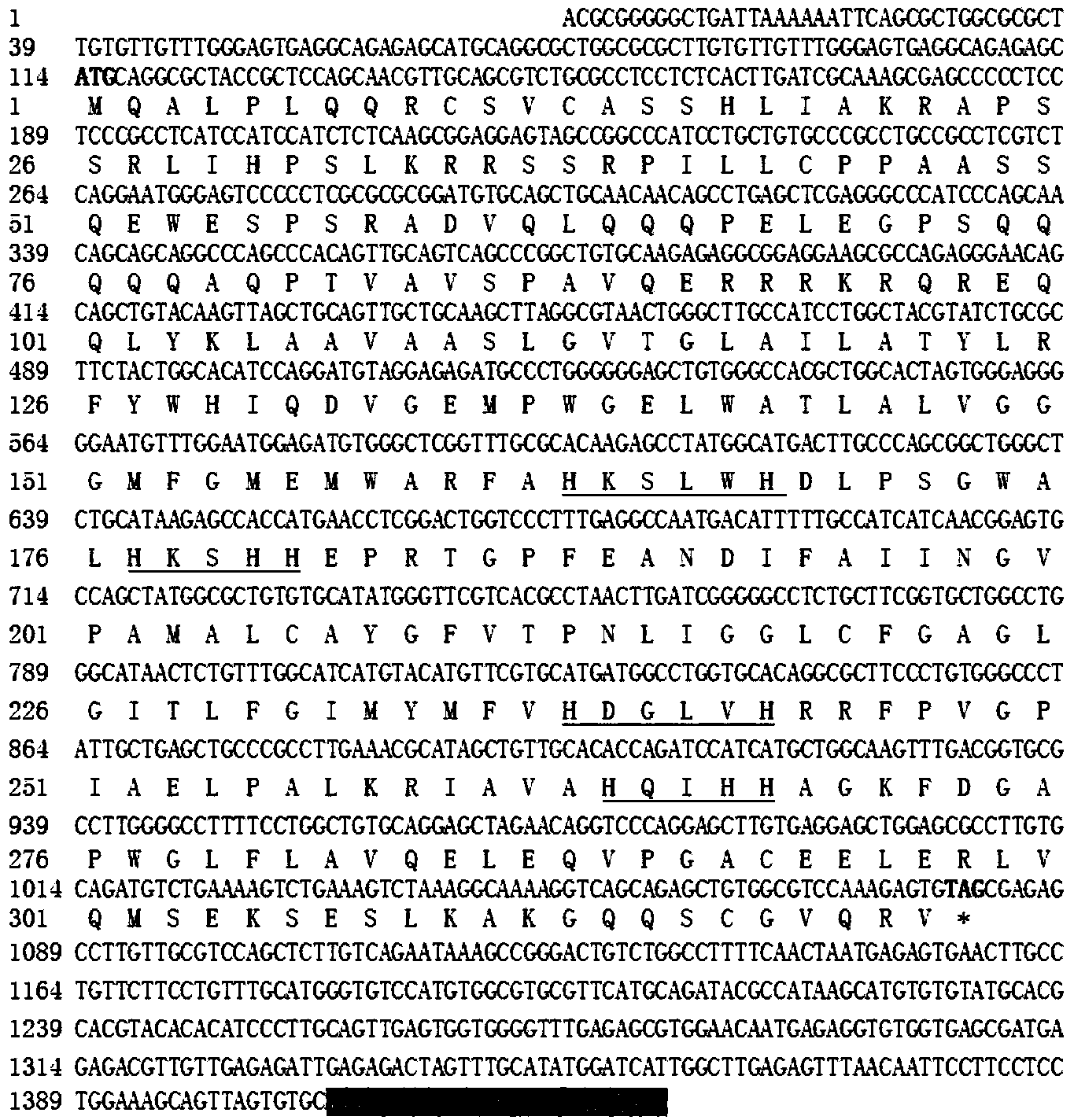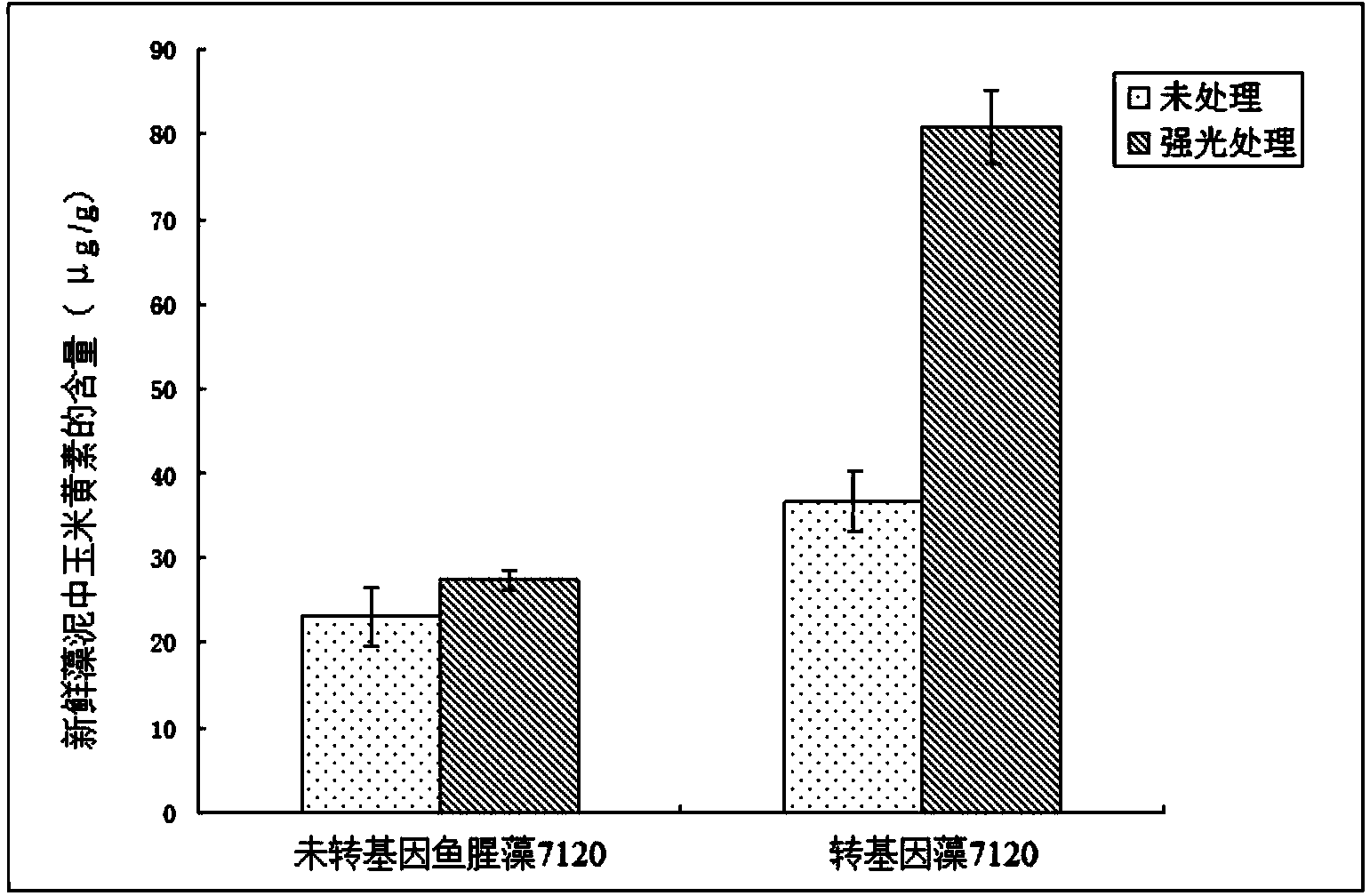Method for increasing content of zeaxanthin in anabaena
A technology of zeaxanthin and Anabaena, applied in the biological field, can solve problems such as no disclosure
- Summary
- Abstract
- Description
- Claims
- Application Information
AI Technical Summary
Problems solved by technology
Method used
Image
Examples
specific Embodiment
[0036] A method for improving zeaxanthin content in Anabaena, specifically comprising the following steps:
[0037] 1. Extract Dunaliella salina RNA, refer to the PrimeScript? RT Master Mix kit instructions, and use RNA as a synthetic reverse transcription template;
[0038] 2. Acquisition of Dunaliella salina β-carotene hydroxylase gene
[0039] According to the open reading frame of Dunaliella salina β-carotene hydroxylase gene (accession number: JN118489), the upstream primer chyb-orf-F: CGGGATCCATGCAGGCGCTACCGCTCCAG and the downstream primer chyb-orf–R: CGGAATTCCTACACTCTTTGGACGCCACAGCT were designed, and the PCR reaction system was: dd h 2 O 9.5 μl, Premix Ex Taq TM Hot Start Version 12.5 μl, chyb-orf–F 1 μl, chyb-orf-R 1 μl, Dunaliella salina cDNA 1 μl, the reaction program is: pre-denaturation at 94°C for 5 minutes, 1 cycle; denaturation at 94°C for 45s, annealing at 55°C 45s, 72°C extension for 1 min, 32 cycles; 72°C extension for 10 min, 1 cycle; 4°C storage, PCR pr...
PUM
 Login to View More
Login to View More Abstract
Description
Claims
Application Information
 Login to View More
Login to View More - R&D
- Intellectual Property
- Life Sciences
- Materials
- Tech Scout
- Unparalleled Data Quality
- Higher Quality Content
- 60% Fewer Hallucinations
Browse by: Latest US Patents, China's latest patents, Technical Efficacy Thesaurus, Application Domain, Technology Topic, Popular Technical Reports.
© 2025 PatSnap. All rights reserved.Legal|Privacy policy|Modern Slavery Act Transparency Statement|Sitemap|About US| Contact US: help@patsnap.com



